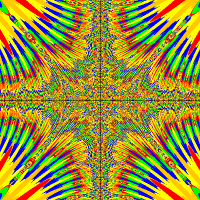I have a bunch of objects that are spawned in a certain location and aren't neccesary linked together in a chain. I was wondering how I would link the certain objects in a chain and if I broke the chain, how it could be repaired by relinking it to the closest unlinked part.
For example
From this: *** ******* To this: ************
This is the code for spawning the enemies.
public void addEnemy()
{
for (int i = 0; i<numOfEnemies; i++)
{
typesOfEnemies = Greenfoot.getRandomNumber(3)+1;
if (spawnDelay == 50)
{
if (typesOfEnemies == 1)
{
eBlueStar[i] = new EnemyBlueStar();
addObject(eBlueStar[i], 110,125);
}
if (typesOfEnemies == 2)
{
eYellowTriangle[i] = new EnemyYellowTriangle();
addObject(eYellowTriangle[i], 110,125);
}
if (typesOfEnemies == 3)
{
eGreenSquare[i] = new EnemyGreenSquare();
addObject(eGreenSquare[i], 110,125);
}
spawnDelay = 0;
}
}
}



